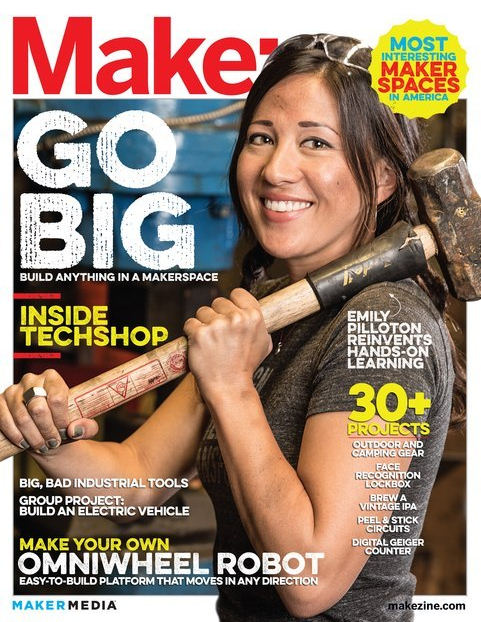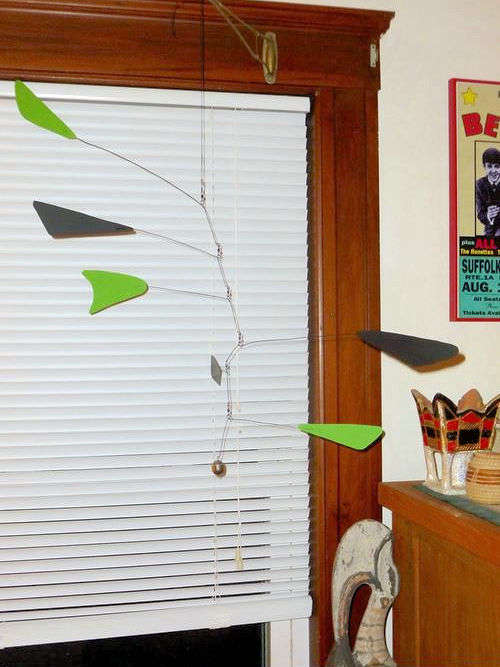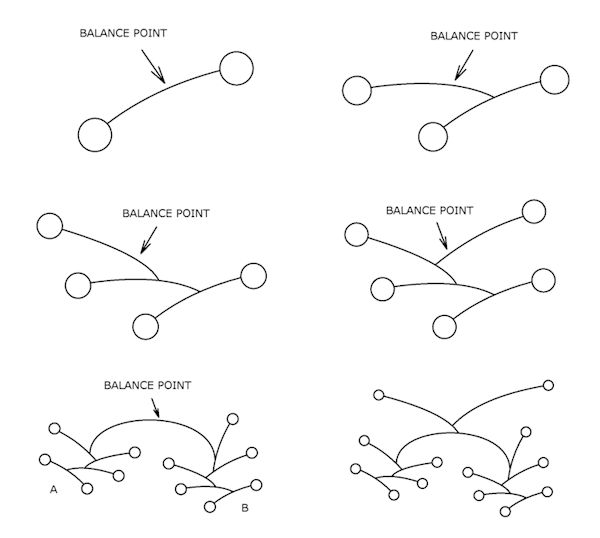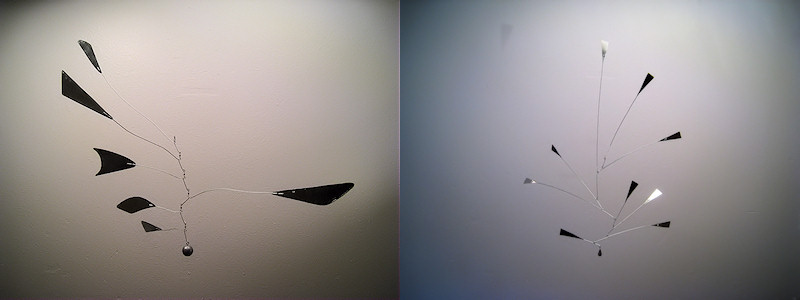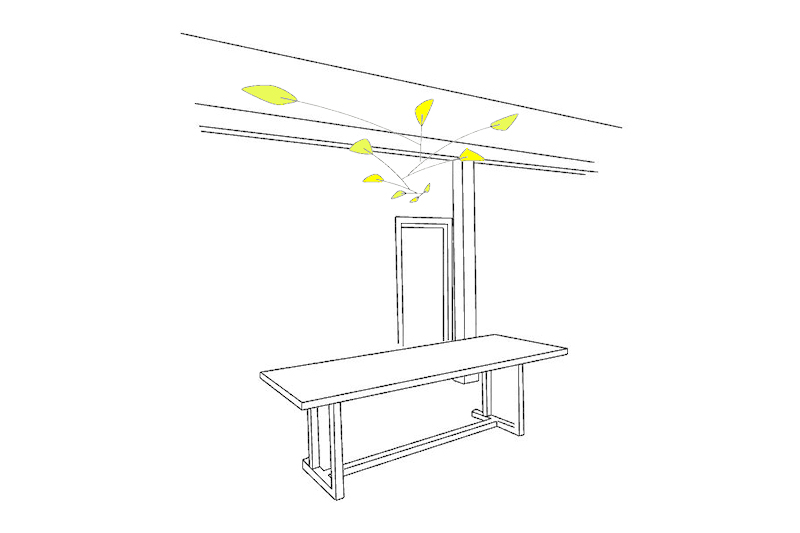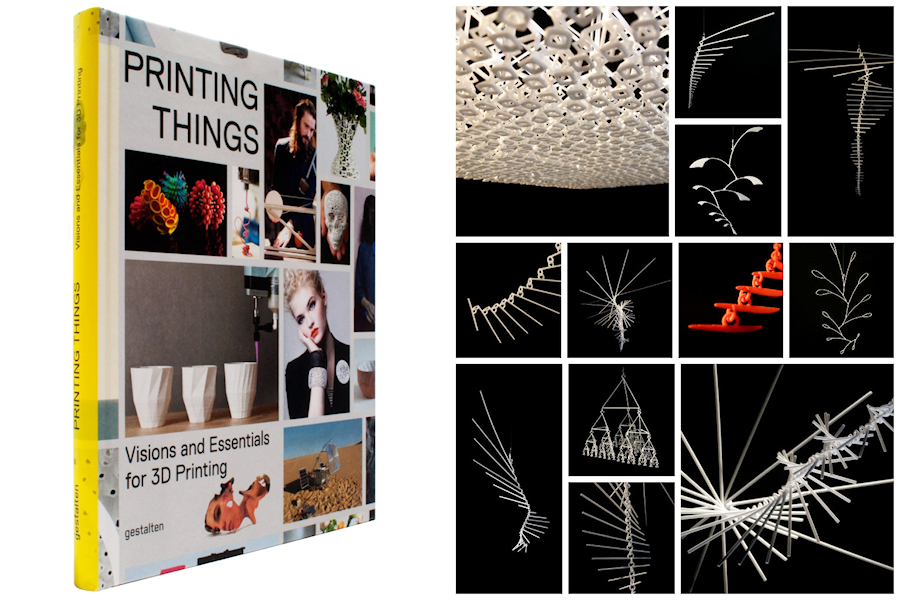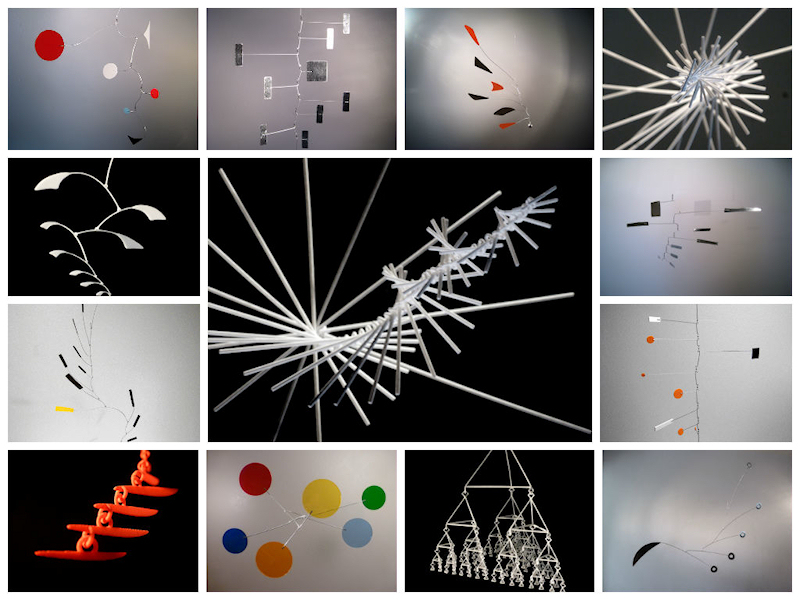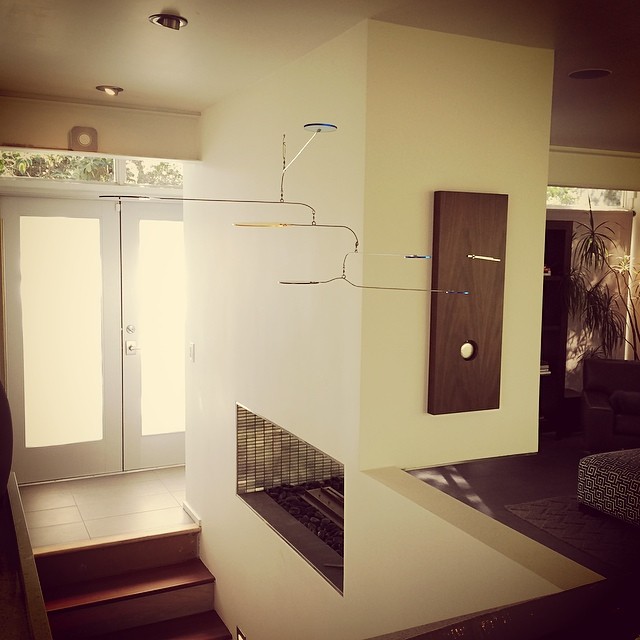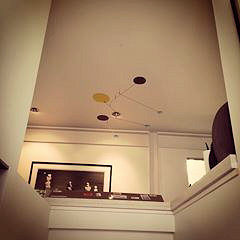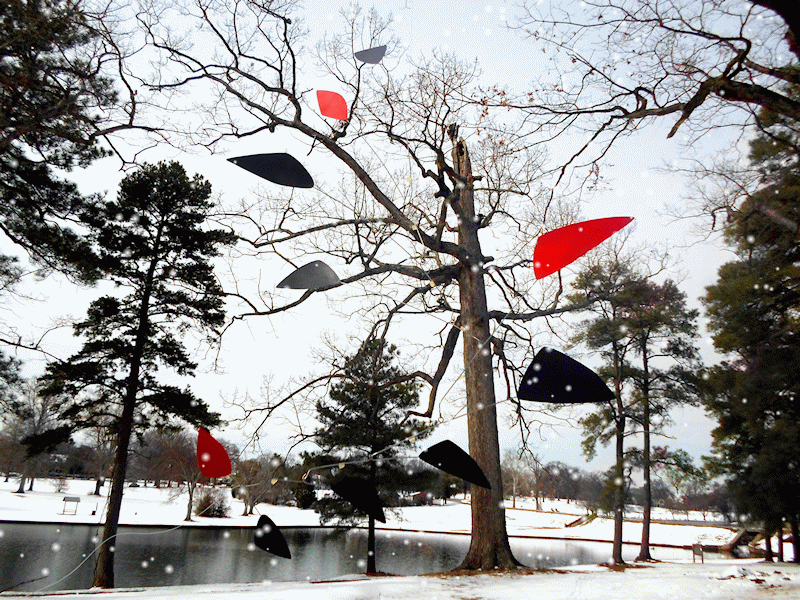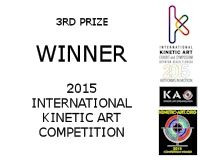Q&A about Mobiles
A few days ago I received an email from a middle school student who is working on a project for his math class about mobile art. His assignment was to research Alexander Calder or choose a different mobile artist to report on. He came across my website and sent me an email asking if he could send me some questions, which I was more than happy to answer. I just thought I’d post the questions and answers on my blog here as well (which also gives me the opportunity to post some images I’ve come up with but haven’t found a place for anywhere else on my website):
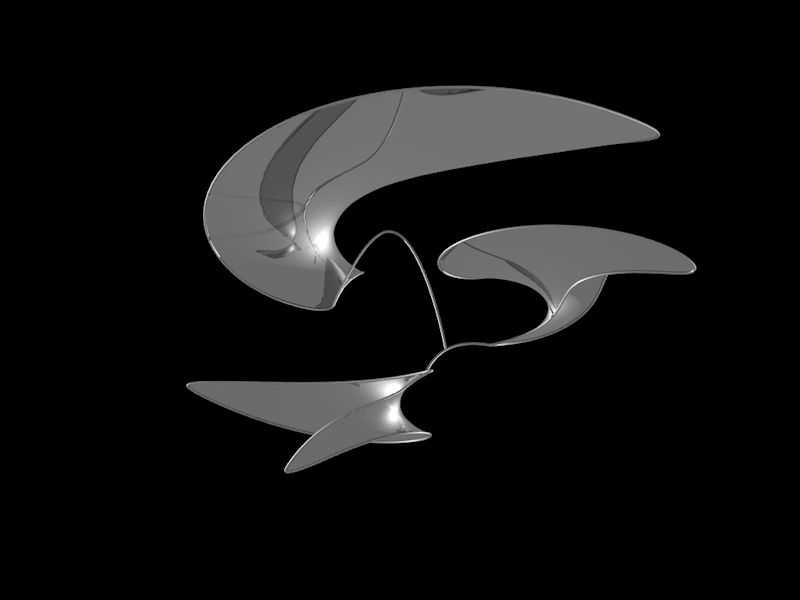
Q: Well my first question for you is why do you think my math teacher wanted us to create a mobile and research a mobile artist?
A: My best guess would be because mobiles are fun to make, beautiful to look at, and are a great way to illustrate how math can be applied to real things. They also allow for easy experimenting.
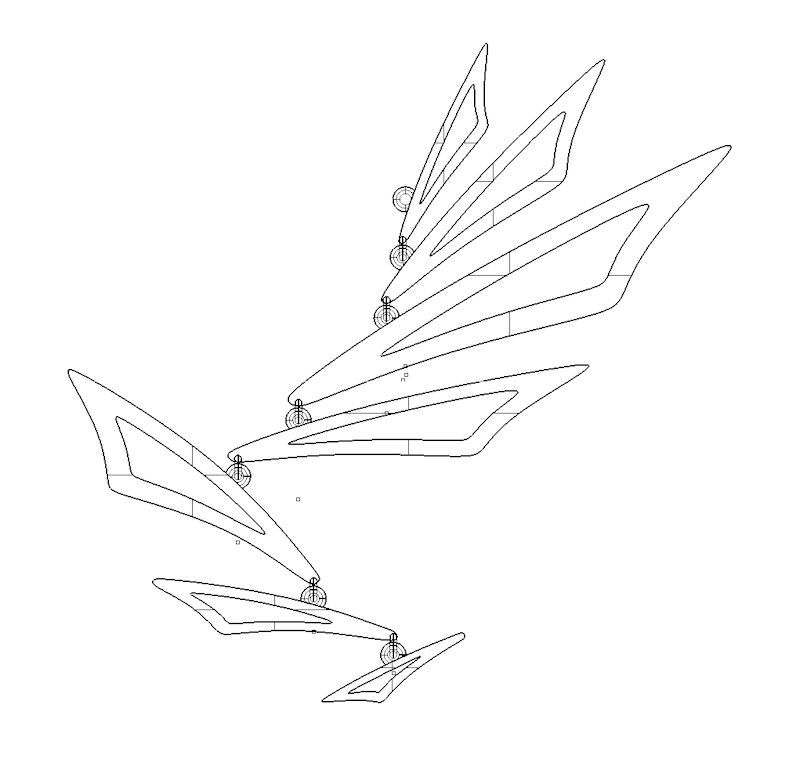
Q: Alexander Calder received a degree in mechanical engineering and told people that he was good at math. Do you have a math/science/computer background that helps when you develop your mobile art?
A: I got into applying math to computer animations when I was in middle school. My friend and I used the programming language Pascal. That was in the late 1980s so it was the early days of computer animation. I’m thinking if I stayed with it, I might be working at a film animation company now. In school, I also liked math and physics very much. With what I do now, those experiences probably gave me the ability to quickly determine if the balance structure of a mobile will work or not. Some of the 3d printed mobiles I designed a couple of years ago (in a collaboration with mathematician Henry Segerman) were created by writing scripts in the programming language Python. It was very easy for me to adapt to it because of my earlier experiences with Pascal. I’m also using engineering software more and more often, mostly a program called Rhinoceros, which I think will lead to being able to design rather complex mobiles eventually. And from time to time I’m working on animating 3d models of mobiles based on gravity, air currents and friction. When it comes to developing new designs, what I think matters the most is the ability to think about it in new ways and not just follow the same old patterns.
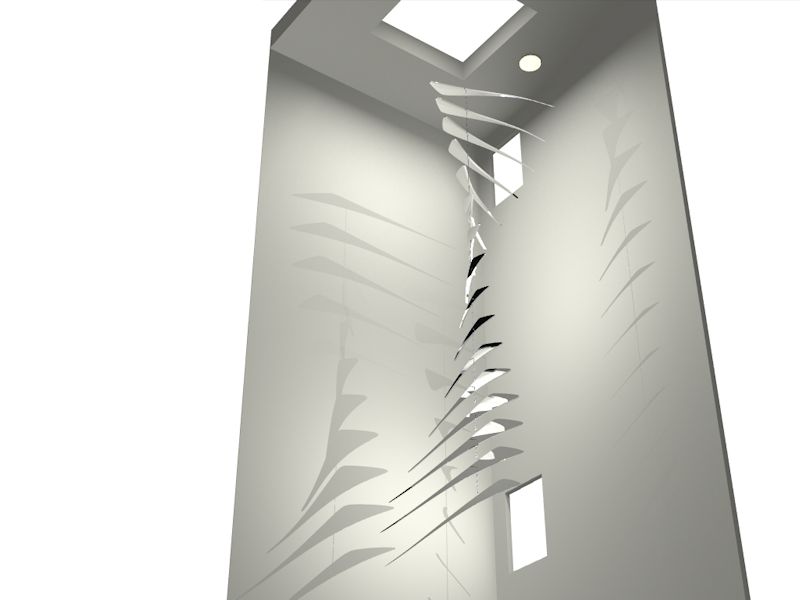
Q: You did lots of interesting things before you became a mobile artist. Do you think those other jobs helped make you a better artist?
A: I think they helped me to see myself as more than an artist. I see myself just as much as someone who runs a custom fabrication business, which involves all the standard parts of running a business (marketing, drawing up proposals, communicating with clients, inventory, shipping, etc). It’s not just about coming up with mobile designs that are fascinating to me. It’s also very important that the client will be very happy with the end result.
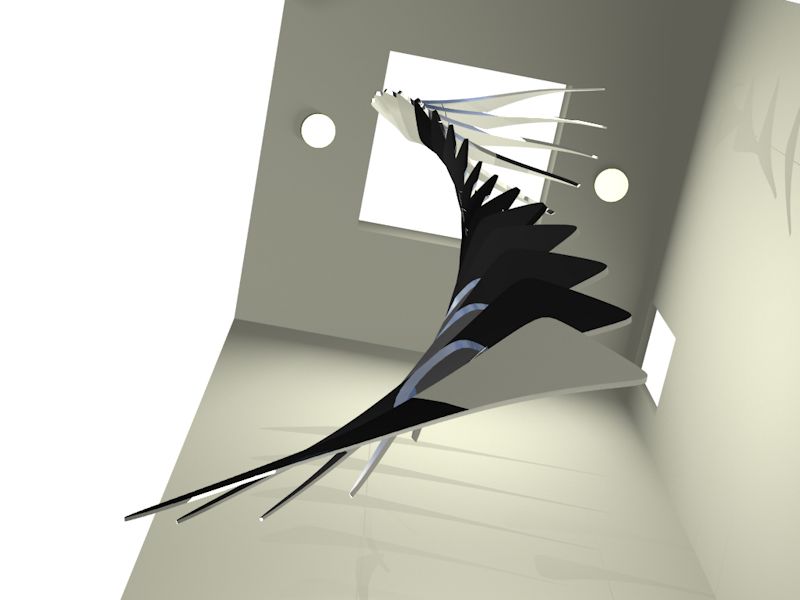
Q: Tell me about a favorite piece of work you created and why it’s one of your favorites.
A: I very much like working on large mobiles. Because of their size, they just have such an amazing visual impact. In general, there are several of my mobiles that I like very much because I think they’re rather original in design:
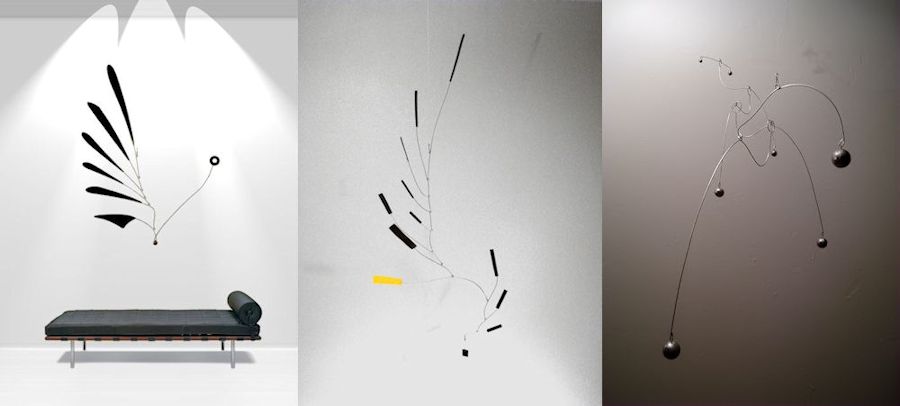
I also very much liked working on the aforementioned collection of 3d printed mobiles. There was the excitement of experimenting in uncharted territory. To my knowledge, no one else has made fully 3d printed mobiles yet. It also allows for mobile designs that would be difficult to make by hand. When my work schedule allows it, I want to explore it further and see what other new designs are made possible by combining mobiles with 3d printing.
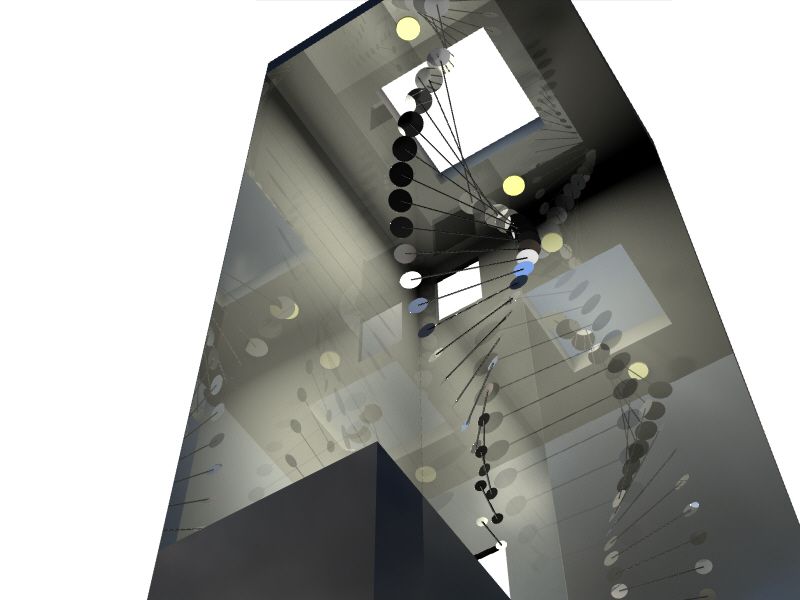
Q: Where do you get your ideas for individual pieces of art?
A: Sometimes I look at the space where the mobile will be installed. I look at the shapes and dynamics of the architecture, or the interior decorating style. Ideas usually emerge from that. Some clients who order custom made mobiles have specific ideas for the design, so I just fill in the parts where the client might be feel unsure about a certain design or technical aspect.
Thanks for the great questions, Aidan!
More interviews:
Behind The Virtual Storefront
Meet The Makers
The Edge
FAMO (in Italian)
Google’s Alexander Calder Doodle Mobile Wouldn’t Work in Reality
On July 22 2011, Google replaced their logo on their homepage worldwide with a doodle to celebrate Alexander Calder‘s 113th birthday:
The doodle was a Calder-style mobile that used HTML5 canvas which made it possible for people to interact with it and make it move. It ran a physics simulation on the mobile’s geometry and then did real-time 3D rendering with vector graphics. You can still view the doodle and try it out (and you should, it’s a lot of fun!) via the Google Doodles Archive.
As someone who has written code for 3d animations and scripts for 3d printed mobiles, I have a lot of admiration for the technical end of this doodle. But as a professional mobile maker, it can’t help to notice that apparently there wasn’t enough research done on how the balance structure of a mobile works. The mobile shown in the Google doodle would never work in reality. It has two completely unsupported sections:
And reconstructing the mobile in my CAD software and calculating the balance points, it turns out that a number of them are incorrect. Here’s where they should be instead:
If someone were to make this mobile, the lowest four parts of it could be fixed by adjusting the balance points to their correct positions. However, that wouldn’t be enough for everything from there on up. The unsupported arms would need to be redesigned first. So in that way, the above indicated balance point corrections in the upper part of the mobile don’t really mean anything. Structural changes would have to be made first.
– Read of my blog about mobiles –
MAKE Article – How to Make a Mobile Based on Calder’s Mobiles
I wrote an article for the new issue (Vol 40) of MAKE magazine titled Make a Modern Mobile – Swivels and a weight give flexibility and stability to this contemporary design. It explains how to make Mobile 78, a mobile based on Alexander Calder’s mid-century modern mobiles with a contemporary design element to it. It includes a list of all the tools and materials needed and goes through all the steps to make the parts and assemble them.
There’s an online version of the article, a PDF version, or subscribe to the magazine (they have lots of other great projects in each issue!).
A great looking mobile based on the article by Keith Wright who sent me this photo:
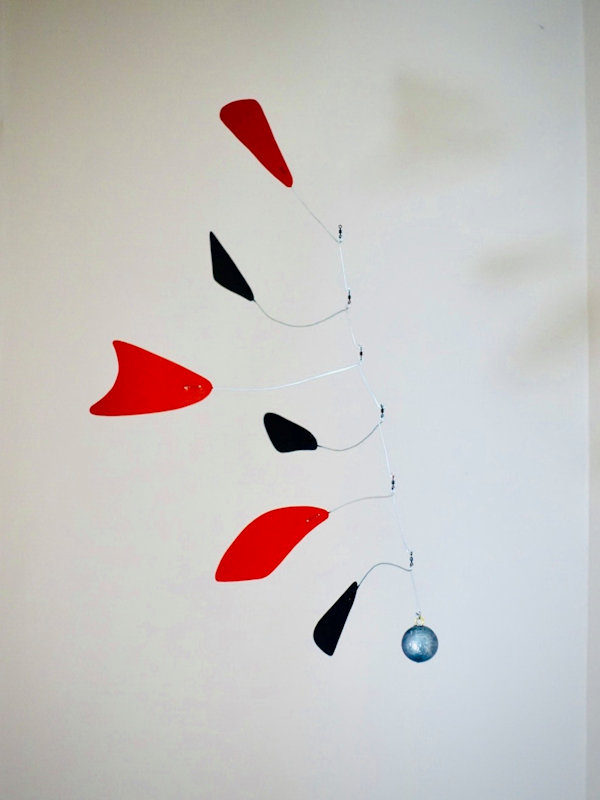
Here’s a photo of a mobile made by Carolyn Kingston based on the instructions as part of the Kinetic Mobile Making Group in the Boston, MA area:
Additional resources for making mobiles:
- Blog post I wrote explaining some of the basics about the balance of a hanging mobile
- Blog post I wrote about What Wire to Use to Make a Hanging Mobile and Where to Buy It
- Blog post with mobile-making related questions that I’ve received via email and my answers
- An article I wrote for Houzz: From the Artist: How to Make a Real Mobile – It’s All in the Balancing Points (there’s a number of questions and answers in the comment section of the article as well). The article is now also available in German
- A history of early mobiles that I’ve put together
- Some technical (“behind-the-scenes”) aspects of designing, making and installing a large custom mobile
- A definition of mobiles
- Q&A about Mobiles for a middle school student’s math class project
- See some of my mobiles if you’re looking for design ideas: handmade mobiles, large custom-made mobiles, 3D printed mobiles and kinetic sculptures
If there’s anything else I can help with, don’t hesitate to contact me.
4 of my mobiles now available at Carol Kucera Gallery in Santa Fe, NM
4 of my mobiles are now available at Carol Kucera Gallery in Santa Fe, NM:
– See more of my hanging mobiles or read more of my blog about mobiles –
Drawing of a custom Calder-like mobile above a conference table
Just a drawing I just made for a custom Calder-like mobile above a conference table:
– See more of my custom mobiles or read more of my blog about mobiles –
3D Printed Mobiles in new book “Printing Things – Visions and Essentials for 3D Printing”
Our 3d printed mobiles are in a new book by publisher and creative agency Gestalten titled Printing Things – Visions and Essentials for 3D Printing. It’s an inspirational and understandable exploration of the creative potential of 3D printing that introduces outstanding projects, key experts, and the newest technologies.
From the Book:
Kinetic Structures, Virtually Balanced: The term “mobile” was first used in 1931 by Marcel Duchamp to describe the kinetic wire-frames made by Alexander Calder, whose iconic works later sparked an entire genre of sculpture. These works were created in situ, taking advantage of ambient air currents and finely calibrated equilibriums to generate large constructions, both dynamic and serene in their movements. In the years that followed, the art form became archetypal, but the advent of sophisticated design and engineering software has allowed for unprecedented methods of working in the medium. A collaboration arose between kinetic sculptor Marco Mahler and Henry Segerman, an assistant professor of mathematics, on the question of advanced modeling for the creation of rapid prototyped mobiles. Communicating exclusively via email, Skype and Twitter, the two were united by the shared interest in a mobile emerging fully assembled from a single print, the separate parts already interconnected. The precision of the printing technology allowed them to calibrate the balance to the micron (one one-thousandth of a millimeter), slightly modifying the thickness of certain elements to generate different bearing. They also experimented with scripted modeling in the Python programming language to increase the limits of intricacy, for instance with the 1365 pieces that make up the Quaternary Tree Mobile Level 6. Finally they uploaded their designs to Shapeways, transforming the mobile from a delicate one-off to a geometric code available for materialization on demand.
About the Book:
3D?printers will soon be found in more and more workshops, offices, and homes. With them, we will be able to print out small pieces of furniture, prototypes, replacement parts, and even a new toothbrush on-site at any time. Consequently, new production methods and business models are developing—along with a new visual language of multidimensional formal explorations. Today, 3D objects and complex forms can already be printed out that were previously impossible to achieve with traditional methods.
Printing Things is an inspirational and understandable exploration of the creative potential of 3D printing. The book not only introduces outstanding projects, key experts, and the newest technologies, but it also delves into the complex topics that these paradigm-shifting technologies bring up, such as how to handle copyrights and seamless manufacturing.
– Read the review on designboom –
Behind the Virtual Storefront: Interview with mobile maker and Etsy seller Marco Mahler
Artist, printmaker and writer Aijung Kim is running a series of interviews with Etsy sellers titled “Behind the Virtual Storefront” in connection with a workshop on Etsy Seller Basics that she is teaching at the VMFA Studio School. She was so nice to ask me to participate:
“I discovered Marco’s shop when I typed “Richmond, VA” in the “Shop Local” feature on Etsy. Marco Mahler’s shop, ArtMobile, intrigued me because fine art mobiles like his are an unusual item to find on Etsy, and he takes great photographs of his work. His mobiles are fun and stylish, and pretty classy-looking if I do say so myself. His 3d-printed mobiles are apparently the first of their kind! Also, I don’t see that many guy sellers on Etsy, so his shop stood out to me for that reason, too. I hope you enjoy reading the interview with Marco. Turns out he’s pretty business-savvy. I learned a lot from reading his answers. Enjoy!”
Mobile above stairwell – Two photos from a happy client
Two photos I just received from a happy customer (“Mobile is amazing, well crafted. Thank you!”):
Custom Sized Mobiles – 3-D modeling software allows for precise planning
Diagrams I just drew up for a couple of proposals to illustrate the space available to custom sized mobiles that will be able to rotate full circle:
These are not the most impressive examples, but using 3-D modeling software allows for precise planning to ensure a custom sized mobile will fit the space nicely.
It is also a great tool during the design stage of a custom mobile to show how it will look exactly in a specific space:

